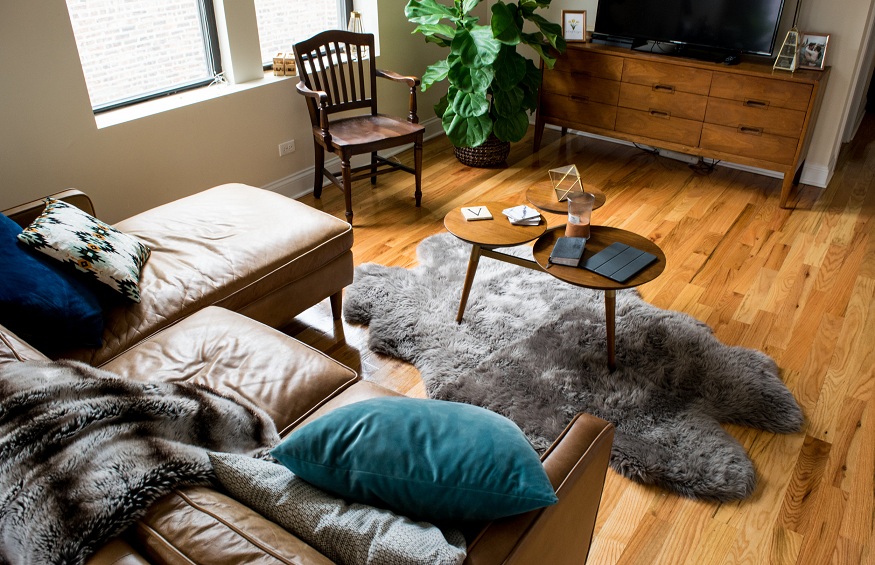The Magnificent Beni Ourain Rug

The craft of the Berber rug originated in the Atlas Mountains of Morocco. As the name implies, the rugs are woven by women of the various Berber tribes who live in these mountains. It’s impossible to pinpoint the exact time that rug weaving developed in the region, but some of the decorative motifs on the rugs may date as far back as the Neolithic era. Unlike other styles, a Berber rug uses multiple small designs instead of a large central one. These designs often represent femininity, fertility, childbirth, and other experiences of women. Other motifs may represent the weaver’s specific tribe. These rugs are traditionally made for practical use to ward off the cold in the higher elevations of the Atlas Mountains, where winter snow is not unheard of.
The heavy-pile wool rugs keep feet warm while standing on the cold ground and can serve as blankets, shawls, sleeping mats, or even burial shrouds. Berber tribes living in the Sahara use thinner, flat-woven rugs to counteract the heat of the desert sand. Every good rug starts with wool gathered from Atlas flocks. It is washed, spun, and dyed using natural pigments from plants and other sources. Modern rugs sometimes use synthetic pigments to achieve more dramatic color effects. There is some traditional color symbolism to be found in Berber rugs. Red stands for strength, blue for wisdom, yellow for eternity, and green represents peace. Once the wool is prepared, it’s placed on a loom to be woven by a skilled craftswoman. The weaving process can take anywhere from a few weeks to a year, depending on the size, the intricacy of the patterns, and the skill of the weaver.
True Berber rugs are produced using the Berber knot rather than the Turkish knot. The Berber knot is only found in rug weaving in certain areas of the Atlas Mountains. Elsewhere the Turkish knot predominates, even in other parts of Morocco. Weavers are generally taught by their mothers, so special techniques may run in the family. The Beni Ourain rug is a subset of the Berber rug. It’s made by the Beni Ourain people, a confederation of 17 Berber tribes living in the Atlas mountains.
As with other rugs, they use a heavy woven pile to keep off the mountain chill. Beni Ourain rugs are distinct from other Berber rugs in their use of undyed wool and much starker black abstract designs forming criss-crosses and lozenge shapes. They were popularized in the West by Swiss-French architect Le Corbusier while he was designing a Parisian house in the 1920s. Both types of rug have long been appreciated by collectors specializing in Moroccan handicrafts, but they have also recently exploded in popularity. Their bold geometric patterns appeal to many decor aesthetics, from minimalism to bohemian chic to exuberant maximalism.






